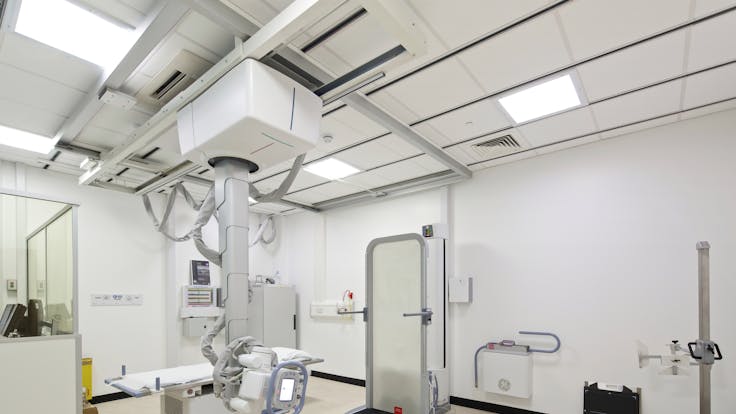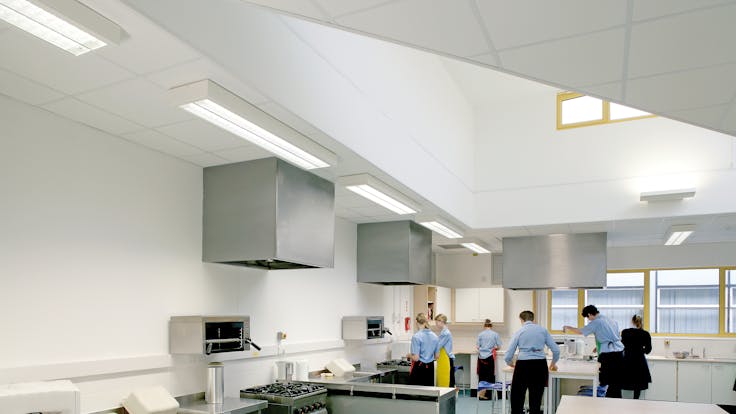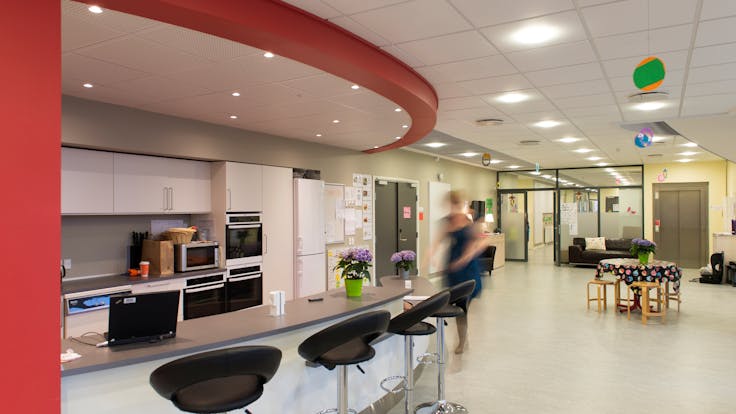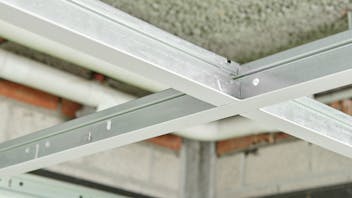Indoor air quality (IAQ)
Indoor air quality is more commonly referred to by its abbreviation, IAQ. In LEED v4, the relevant category is called Indoor Environmental Quality (IEQ).
A key factor in IEQ is the use of low-emitting materials and acoustic treatments in interior spaces. High levels of contaminants and unwanted noise can lead to loss of concentration, bad odors, and irritation.
Children are often the most susceptible to pollutants emitted from building materials. This is because children breathe in more air and, as a result, are absorbing more chemicals that can be harmful to their growing bodies. Since most children spend most their year inside school buildings, these projects deserve extra attention for IAQ.
The U.S. Environmental Protection Agency found that up to half of the schools in America have problems linked to poor IAQ.1 This increases the risk of chronic allergies and asthma among children. Asthma is considered the #1 chronic childhood illness and the leading cause of absenteeism, with almost 14.7 million school days missed each year.2
























